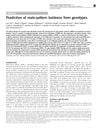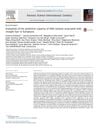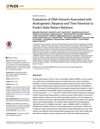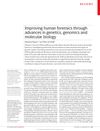6 citations
,
November 2022 in “Forensic Science Medicine and Pathology” 37 citations
,
August 2020 in “BMC Genomics” The study investigated the potential of predicting human head hair greying using genetic data from nearly 1,000 Polish individuals. It developed prediction models incorporating age, sex, and 13 SNPs, with significant markers including KIF1A rs59733750 and FGF5 rs7680591. The models achieved high accuracy, with AUCs up to 0.875, but genetic variants explained less than 10% of the variation, highlighting age as the dominant factor. The research confirmed the association of the IRF4 gene with hair greying and suggested that environmental factors and DNA methylation might also play roles. The study concluded that hair greying is a complex genetic trait and recommended further research to enhance prediction models.
 37 citations
,
October 2015 in “European Journal of Human Genetics”
37 citations
,
October 2015 in “European Journal of Human Genetics” Genetic data can predict male-pattern baldness with moderate accuracy, especially for early-onset cases in some European men.
 36 citations
,
September 2015 in “Forensic Science International: Genetics”
36 citations
,
September 2015 in “Forensic Science International: Genetics” Certain DNA variants can predict straight hair in Europeans but are not highly specific.
 48 citations
,
May 2015 in “PLOS ONE”
48 citations
,
May 2015 in “PLOS ONE” DNA variants can predict male pattern baldness, with higher risk scores increasing baldness likelihood.
 383 citations
,
February 2011 in “Nature Reviews Genetics”
383 citations
,
February 2011 in “Nature Reviews Genetics” DNA profiling in forensics has improved, but predicting physical traits and ancestry from DNA has limitations and requires ethical consideration.



